-
 Bitcoin
Bitcoin $115100
-2.99% -
 Ethereum
Ethereum $3642
-1.38% -
 XRP
XRP $3.027
-5.51% -
 Tether USDt
Tether USDt $1.000
-0.05% -
 BNB
BNB $763.4
-1.32% -
 Solana
Solana $177.2
-5.42% -
 USDC
USDC $0.9999
-0.02% -
 Dogecoin
Dogecoin $0.2247
-6.47% -
 TRON
TRON $0.3135
0.23% -
 Cardano
Cardano $0.7824
-4.46% -
 Hyperliquid
Hyperliquid $42.53
-0.97% -
 Stellar
Stellar $0.4096
-6.09% -
 Sui
Sui $3.662
-2.61% -
 Chainlink
Chainlink $17.63
-3.57% -
 Bitcoin Cash
Bitcoin Cash $536.3
2.94% -
 Hedera
Hedera $0.2450
0.34% -
 Avalanche
Avalanche $23.23
-3.15% -
 Litecoin
Litecoin $112.2
-1.23% -
 UNUS SED LEO
UNUS SED LEO $8.976
-0.30% -
 Shiba Inu
Shiba Inu $0.00001341
-2.72% -
 Toncoin
Toncoin $3.101
-2.44% -
 Ethena USDe
Ethena USDe $1.001
-0.05% -
 Uniswap
Uniswap $10.08
-1.97% -
 Polkadot
Polkadot $3.938
-2.77% -
 Monero
Monero $323.9
0.87% -
 Dai
Dai $0.9999
-0.02% -
 Bitget Token
Bitget Token $4.481
-1.69% -
 Pepe
Pepe $0.00001199
-5.94% -
 Aave
Aave $288.2
-0.68% -
 Cronos
Cronos $0.1279
0.36%
Is the maintenance cost of a private chain high and who will bear it?
Maintenance costs of private chains include hardware, software, operations, and security; costs are typically borne by the operating entity or shared in consortia.
May 16, 2025 at 09:08 pm
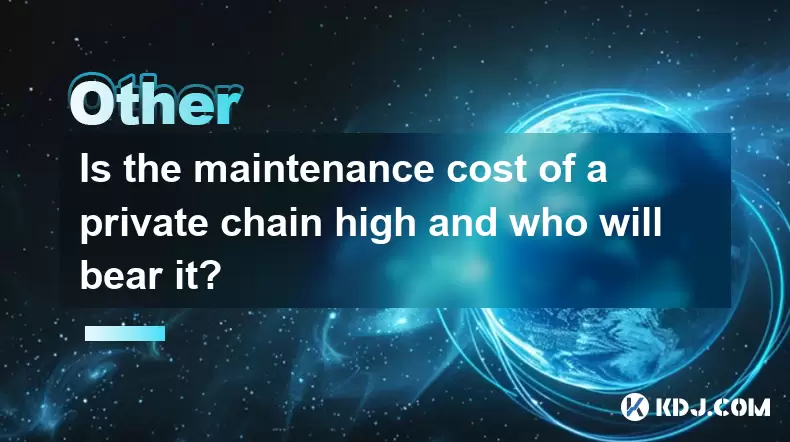
Is the maintenance cost of a private chain high and who will bear it?
Private chains, also known as permissioned blockchains, are networks where only a select group of participants can join and interact. Unlike public blockchains, where anyone can participate, private chains are often used by enterprises and organizations that require more control over their network. One of the critical considerations for organizations looking to implement a private chain is the maintenance cost and who will bear it. This article will delve into these aspects in detail.
Understanding the Components of Maintenance Costs
The maintenance cost of a private chain encompasses several elements. These include hardware costs, software costs, operational costs, and security costs. Each of these components plays a crucial role in the overall upkeep of the network.
Hardware Costs: Private chains require robust hardware to ensure the network runs smoothly. This includes servers, storage devices, and networking equipment. The cost can vary based on the scale of the network and the specific hardware requirements.
Software Costs: The software that runs the private chain, including the blockchain platform and any additional tools or applications, also contributes to the maintenance cost. Depending on the platform, there may be licensing fees or ongoing support costs.
Operational Costs: These include the expenses related to running the network daily. This encompasses electricity, cooling, and manpower needed to monitor and manage the network.
Security Costs: Security is paramount for private chains, especially since they often handle sensitive data. Costs associated with security measures, such as firewalls, intrusion detection systems, and regular security audits, add to the overall maintenance expense.
Factors Influencing Maintenance Costs
Several factors can influence the maintenance costs of a private chain. Understanding these can help organizations better plan and manage their expenses.
Network Size and Complexity: A larger and more complex network will naturally incur higher maintenance costs. More nodes mean more hardware and more operational overhead.
Performance Requirements: If the private chain needs to handle high transaction volumes or requires low latency, the hardware and software requirements may be more demanding, leading to higher costs.
Regulatory Compliance: Depending on the industry, there may be specific regulatory requirements that the private chain must meet. Compliance can add to the maintenance costs through additional audits and reporting.
Scalability Needs: If the organization anticipates growth, the private chain must be scalable. This might mean investing in more robust hardware and software solutions upfront, which can increase maintenance costs.
Who Bears the Maintenance Costs?
The responsibility for bearing the maintenance costs of a private chain typically falls on the entity that operates the network. However, the specifics can vary based on the organizational structure and the agreements in place.
Single Entity Operation: In cases where a single organization operates the private chain, it will bear all the maintenance costs. This is common in scenarios where the private chain is used for internal purposes, such as supply chain management within a company.
Consortium Operation: If the private chain is operated by a consortium of organizations, the costs may be shared among the members. The exact division of costs can be negotiated and outlined in a consortium agreement.
Outsourced Operation: Some organizations may choose to outsource the operation of their private chain to a third-party service provider. In such cases, the maintenance costs are typically included in the service fees paid to the provider.
Strategies to Manage Maintenance Costs
While the maintenance costs of a private chain can be significant, there are strategies that organizations can employ to manage and potentially reduce these expenses.
Optimize Hardware Usage: By carefully planning the hardware requirements and ensuring optimal usage, organizations can reduce unnecessary expenditures. This might involve using cloud services to scale resources up or down as needed.
Leverage Open-Source Solutions: Many blockchain platforms are open-source, which can help reduce software costs. However, it's important to consider the potential need for additional support and customization.
Automate Operations: Automation can help reduce operational costs by minimizing the need for manual intervention. Tools for monitoring, management, and security can be automated to improve efficiency.
Regular Security Audits: While security costs can be high, regular audits can help identify vulnerabilities early and prevent costly breaches. Proactive security measures can be more cost-effective in the long run.
Case Studies: Real-World Examples
Examining real-world examples can provide valuable insights into how different organizations handle the maintenance costs of their private chains.
Example 1: Financial Institution: A large financial institution implemented a private chain for interbank transactions. The institution opted for a consortium model, sharing the costs with other participating banks. They invested in high-performance hardware to meet their low-latency requirements and used an open-source blockchain platform to reduce software costs.
Example 2: Manufacturing Company: A manufacturing company used a private chain for supply chain management. The company operated the network internally and bore all the maintenance costs. They focused on optimizing hardware usage and automating operations to manage expenses effectively.
Example 3: Healthcare Consortium: A group of healthcare providers formed a consortium to share patient data securely. The consortium shared the maintenance costs equally among its members. They used a third-party service provider to manage the network, which included the maintenance costs in their service fees.
Frequently Asked Questions
Q1: Can the maintenance costs of a private chain be reduced over time?
Yes, maintenance costs can be reduced over time through optimization and automation. As organizations gain more experience with their private chain, they can identify areas for cost savings and implement more efficient processes.
Q2: Are there any tax benefits associated with the maintenance costs of a private chain?
Depending on the jurisdiction, there may be tax benefits or deductions available for the costs associated with operating a private chain. It's advisable to consult with a tax professional to understand the specific benefits that may apply.
Q3: How does the choice of blockchain platform affect maintenance costs?
The choice of blockchain platform can significantly impact maintenance costs. Some platforms may have higher licensing fees or require more robust hardware. Additionally, the availability of community support and open-source options can influence the ongoing costs of maintenance.
Q4: Can maintenance costs be negotiated in a consortium agreement?
Yes, maintenance costs can be negotiated as part of a consortium agreement. The members of the consortium can discuss and agree on how the costs will be shared, taking into account each member's usage and benefit from the private chain.
Disclaimer:info@kdj.com
The information provided is not trading advice. kdj.com does not assume any responsibility for any investments made based on the information provided in this article. Cryptocurrencies are highly volatile and it is highly recommended that you invest with caution after thorough research!
If you believe that the content used on this website infringes your copyright, please contact us immediately (info@kdj.com) and we will delete it promptly.
- Solana, Altcoins, and Coinbase: What's the Buzz?
- 2025-07-26 06:30:12
- XRP in 2025: Bull Run or Bust?
- 2025-07-26 07:30:12
- HBAR, Robinhood, and Altcoins: A New York Minute on Crypto's Latest Moves
- 2025-07-26 07:10:11
- Bitcoin, Altcoins, and Meme Coins: Navigating the Wild West of Crypto
- 2025-07-26 07:50:11
- USDC on Sei: Zero-Bridge Future Fuels DeFi Confidence
- 2025-07-26 07:15:11
- Ethereum, Pepeto Presale, and Market Appetite: What's the Buzz?
- 2025-07-26 06:50:12
Related knowledge
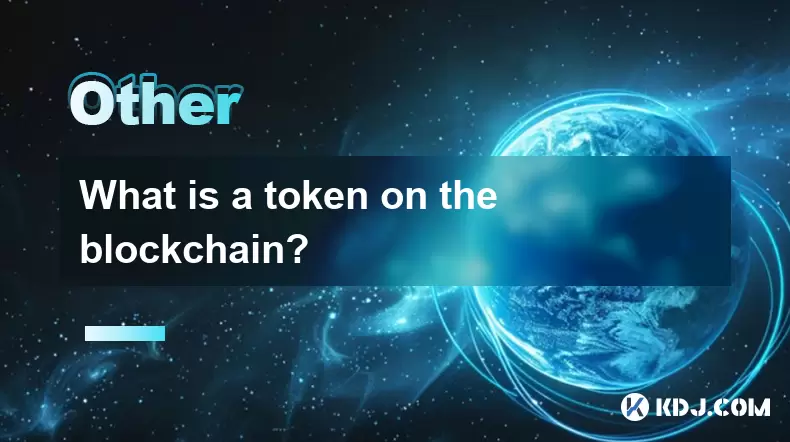
What is a token on the blockchain?
Jul 21,2025 at 07:00am
Understanding the Concept of a TokenIn the realm of blockchain technology, a token is a digital representation of an asset or utility that exists on a...
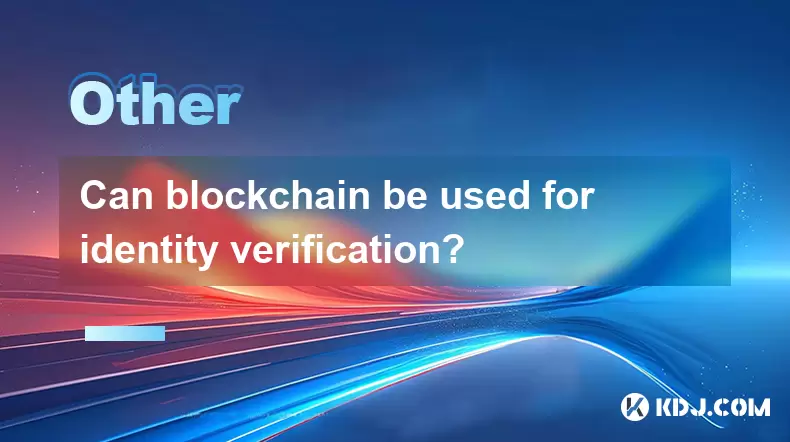
Can blockchain be used for identity verification?
Jul 18,2025 at 02:14pm
Understanding Identity Verification in the Digital AgeIn the modern digital landscape, identity verification has become a critical component for ensur...
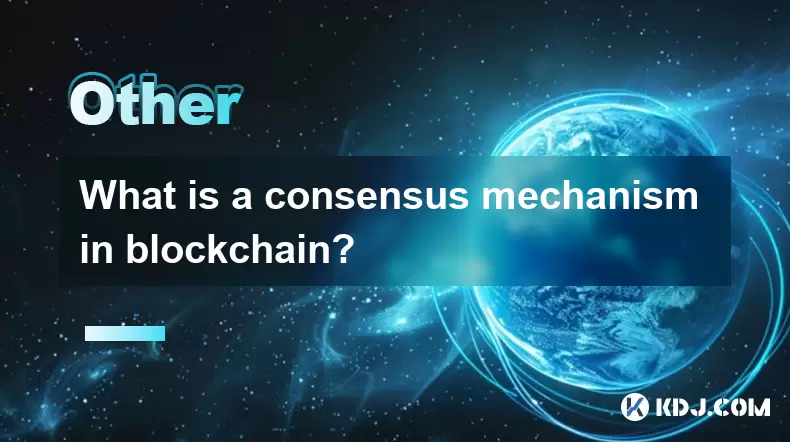
What is a consensus mechanism in blockchain?
Jul 21,2025 at 03:01am
Understanding the Basics of Consensus MechanismsA consensus mechanism is a critical component of any blockchain network. It refers to the process by w...
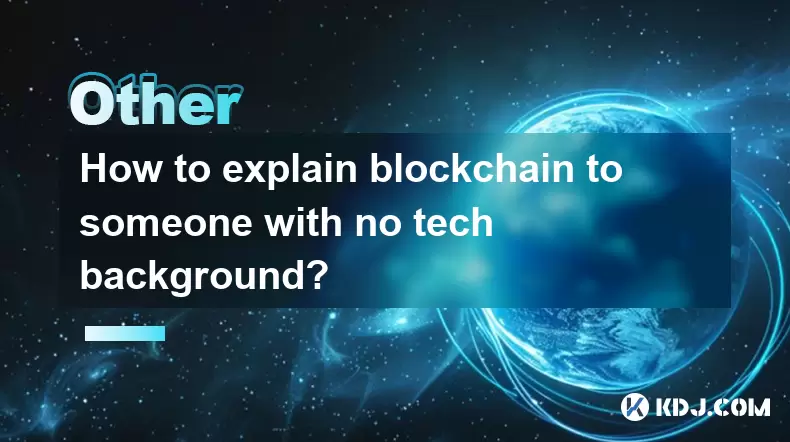
How to explain blockchain to someone with no tech background?
Jul 18,2025 at 11:08pm
Understanding the Basics of BlockchainTo explain blockchain to someone with no tech background, it's essential to start with simple analogies and avoi...

Who invented blockchain technology?
Jul 23,2025 at 01:28am
Origins of Blockchain TechnologyBlockchain technology did not emerge from a single inventor or institution. Instead, it evolved through a series of ac...
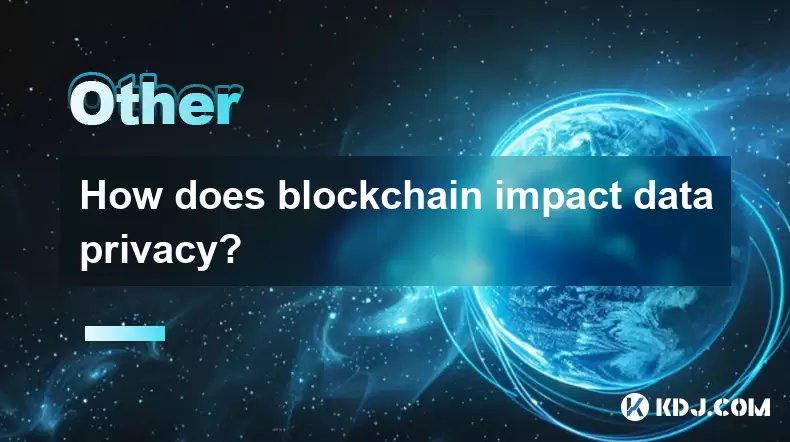
How does blockchain impact data privacy?
Jul 21,2025 at 02:21pm
Understanding the Role of Blockchain in Data PrivacyBlockchain technology, originally developed as the underlying infrastructure for cryptocurrencies ...

What is a token on the blockchain?
Jul 21,2025 at 07:00am
Understanding the Concept of a TokenIn the realm of blockchain technology, a token is a digital representation of an asset or utility that exists on a...

Can blockchain be used for identity verification?
Jul 18,2025 at 02:14pm
Understanding Identity Verification in the Digital AgeIn the modern digital landscape, identity verification has become a critical component for ensur...

What is a consensus mechanism in blockchain?
Jul 21,2025 at 03:01am
Understanding the Basics of Consensus MechanismsA consensus mechanism is a critical component of any blockchain network. It refers to the process by w...

How to explain blockchain to someone with no tech background?
Jul 18,2025 at 11:08pm
Understanding the Basics of BlockchainTo explain blockchain to someone with no tech background, it's essential to start with simple analogies and avoi...

Who invented blockchain technology?
Jul 23,2025 at 01:28am
Origins of Blockchain TechnologyBlockchain technology did not emerge from a single inventor or institution. Instead, it evolved through a series of ac...

How does blockchain impact data privacy?
Jul 21,2025 at 02:21pm
Understanding the Role of Blockchain in Data PrivacyBlockchain technology, originally developed as the underlying infrastructure for cryptocurrencies ...
See all articles

























































































